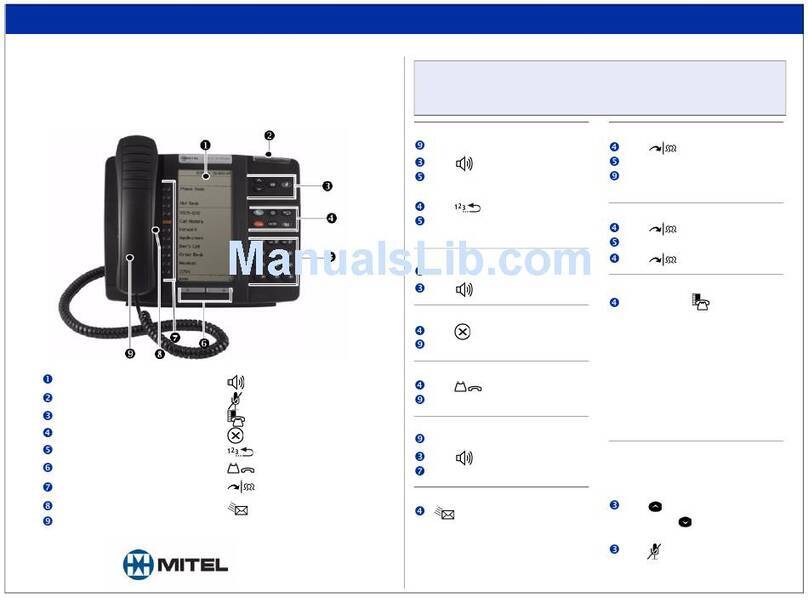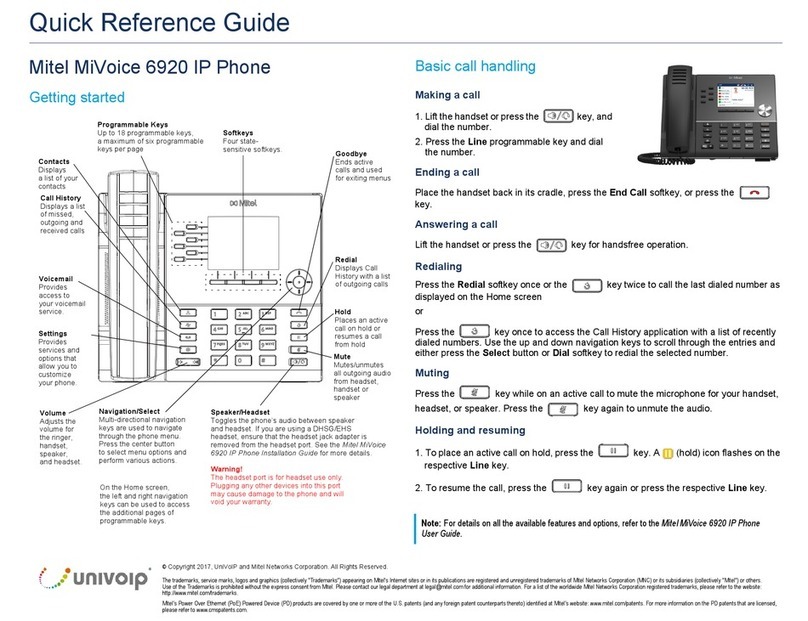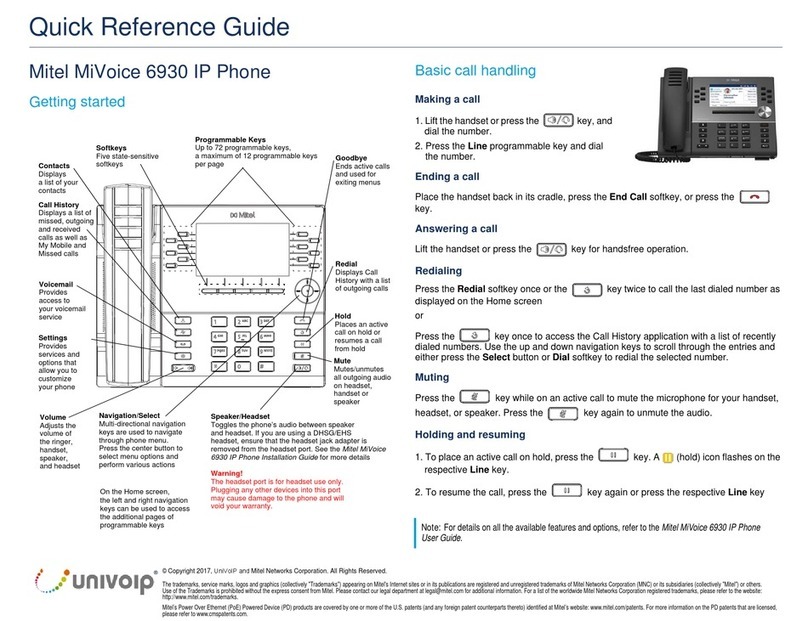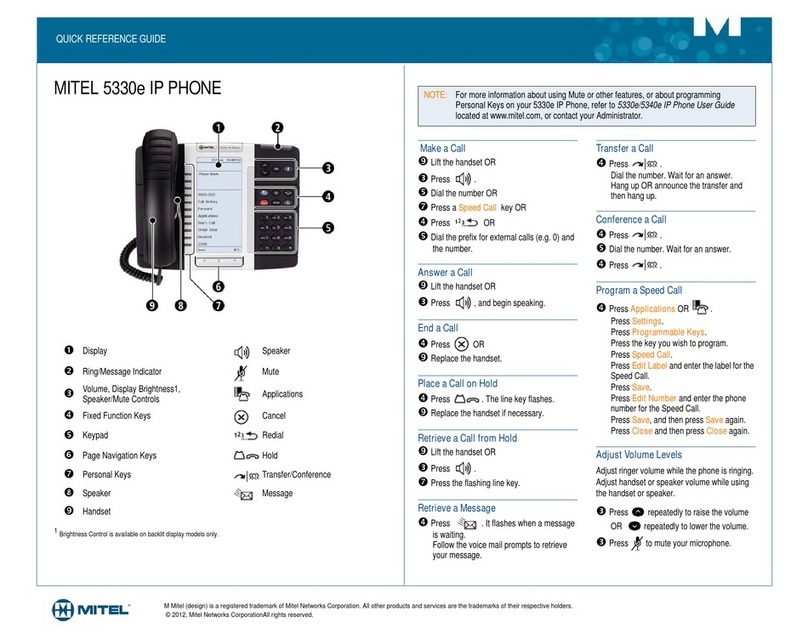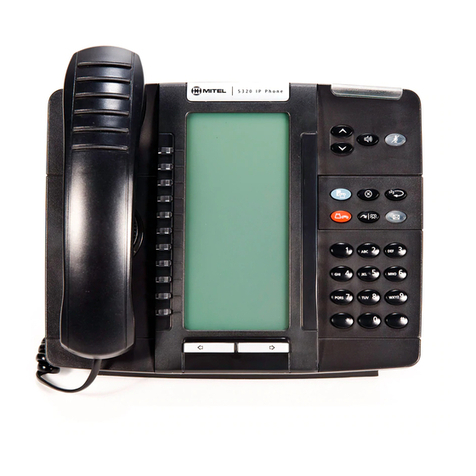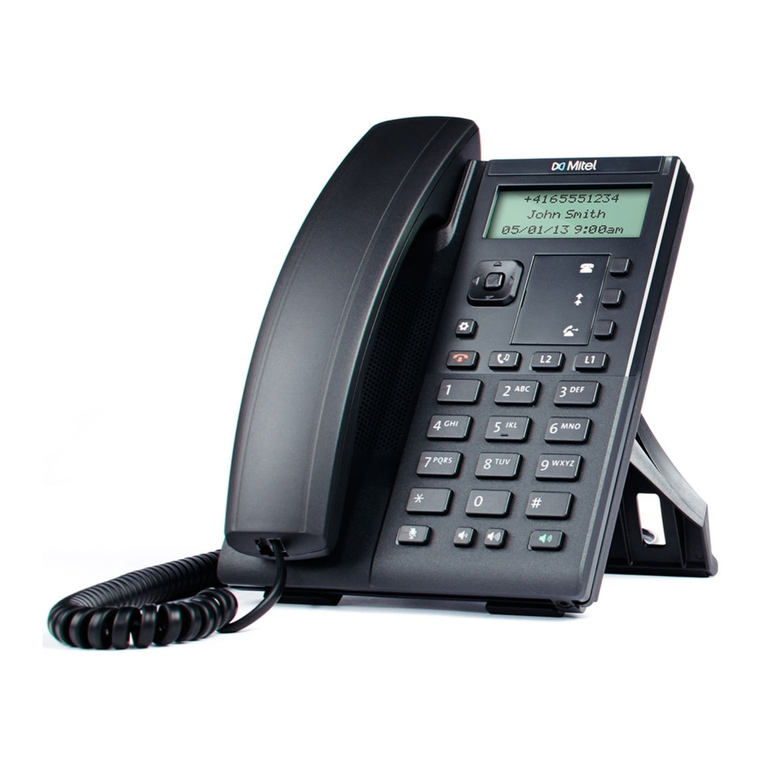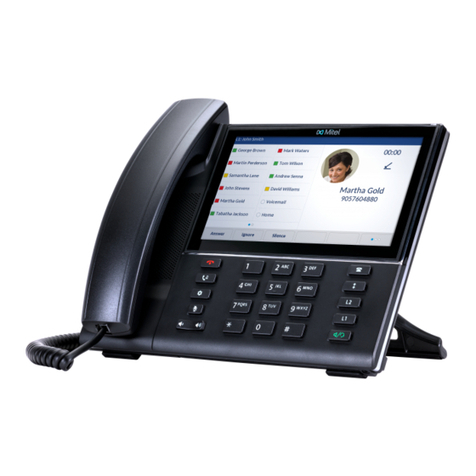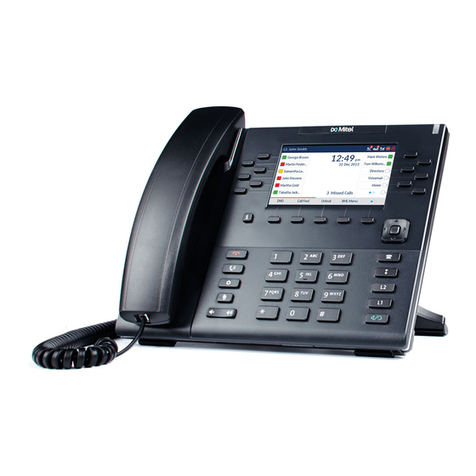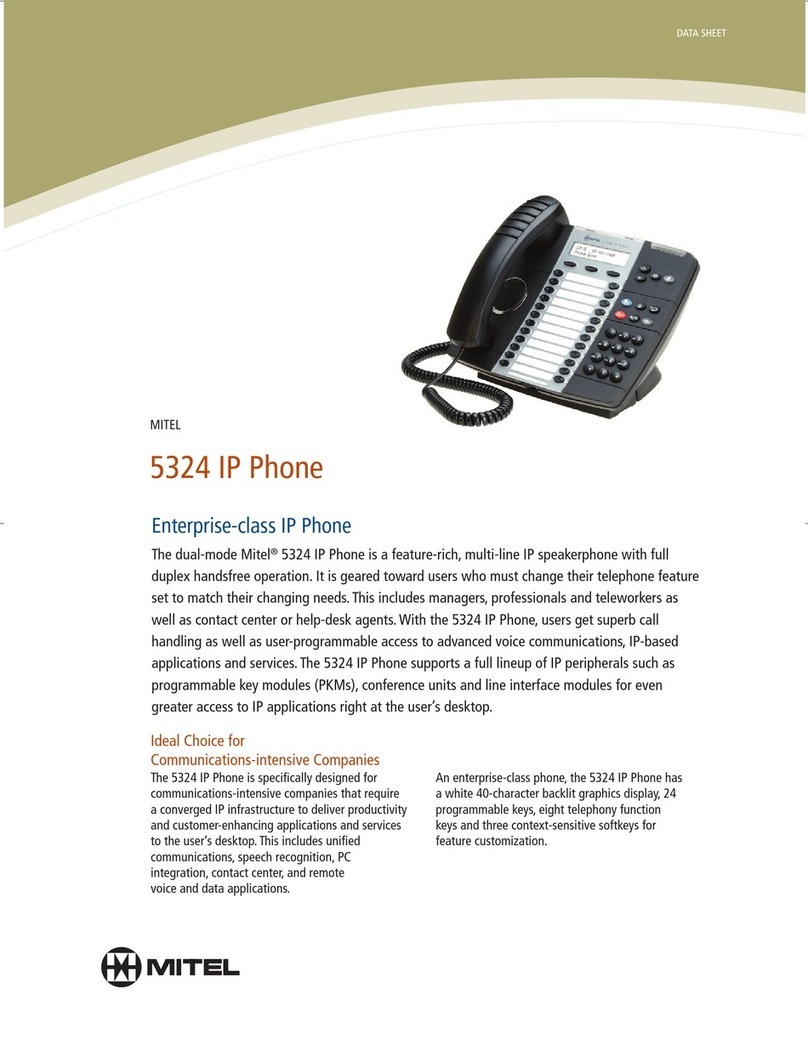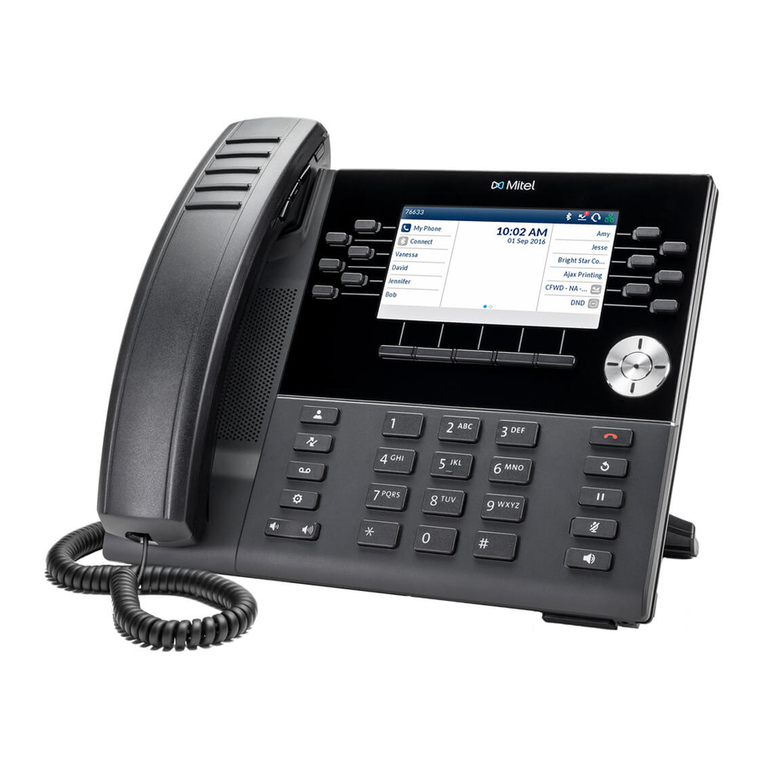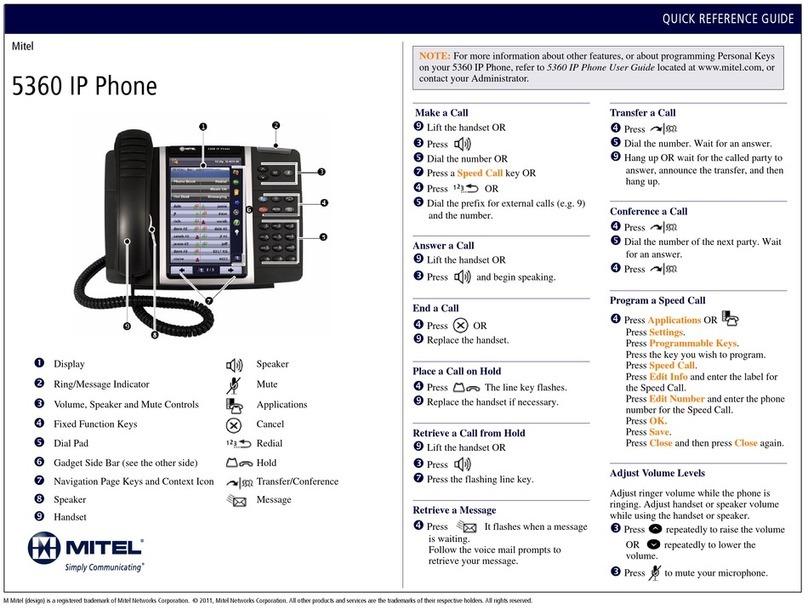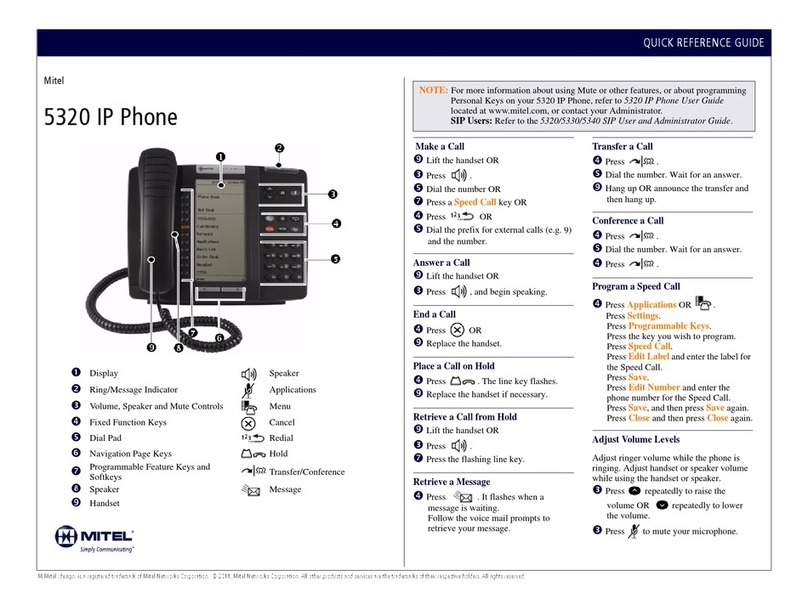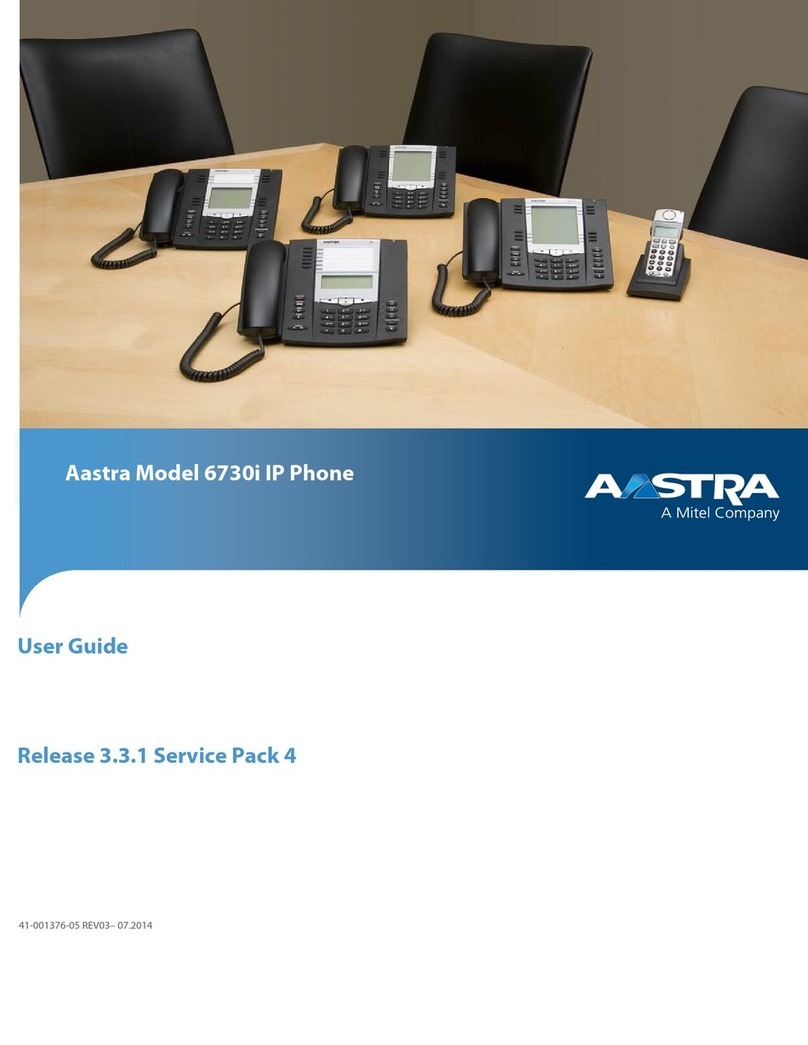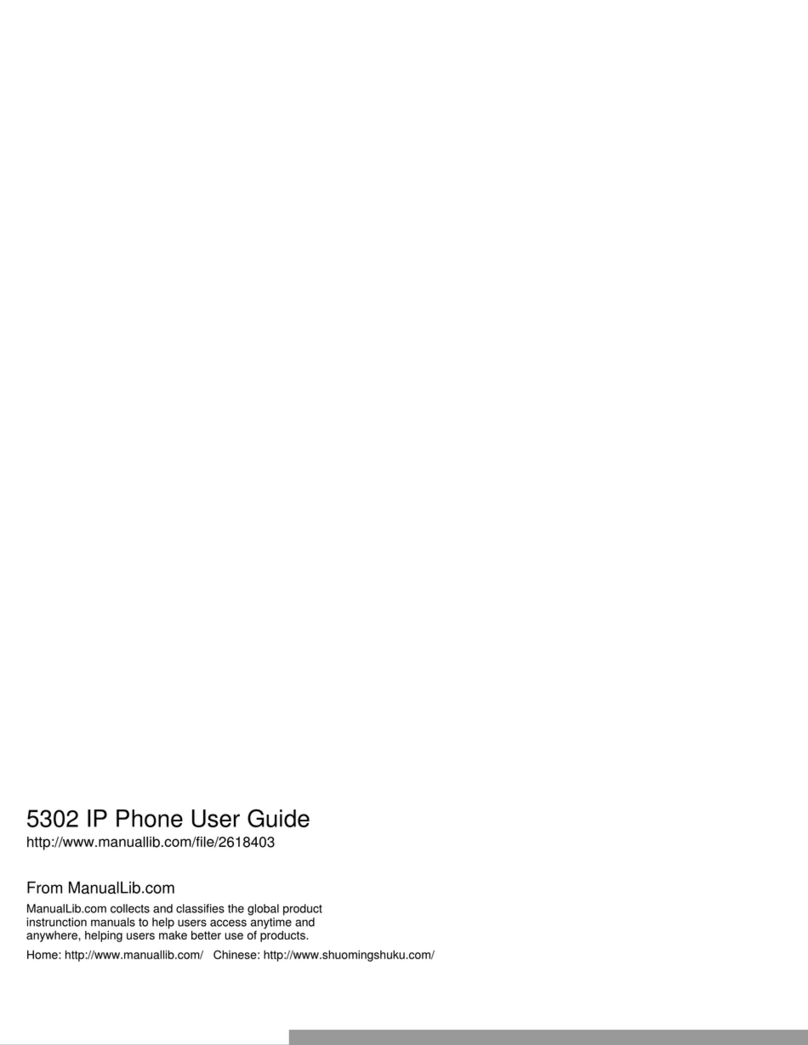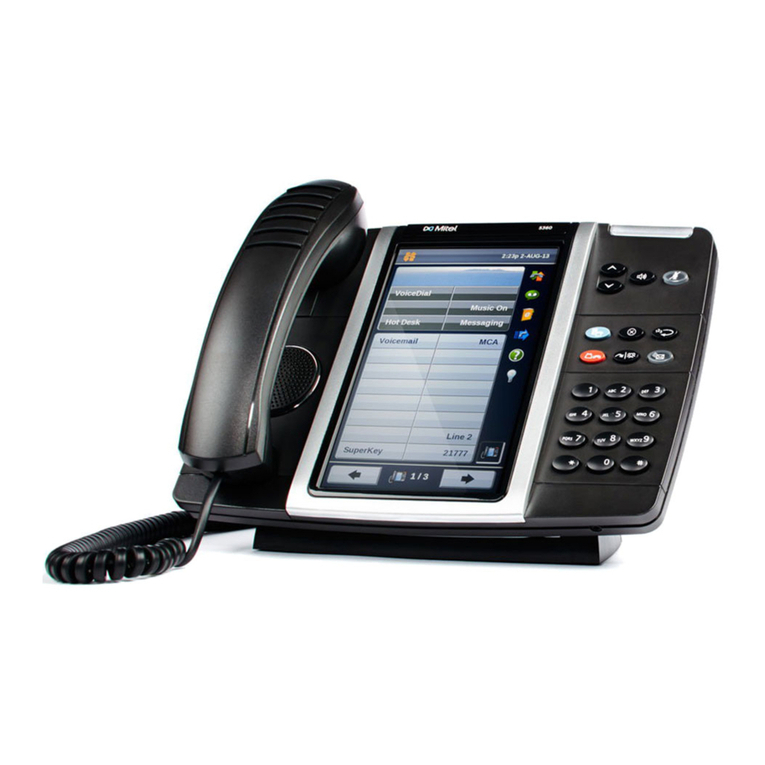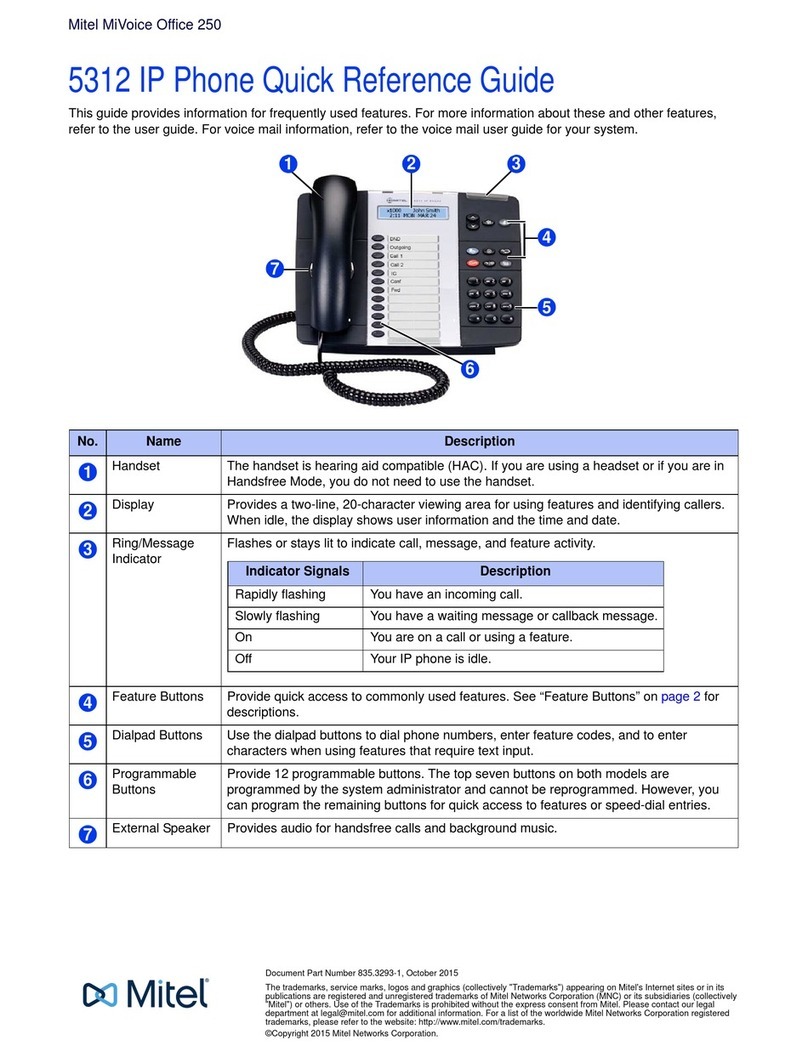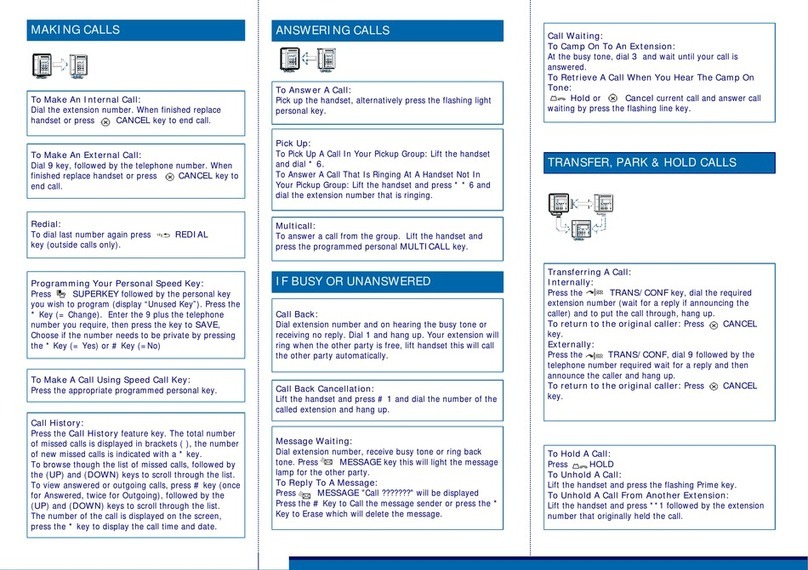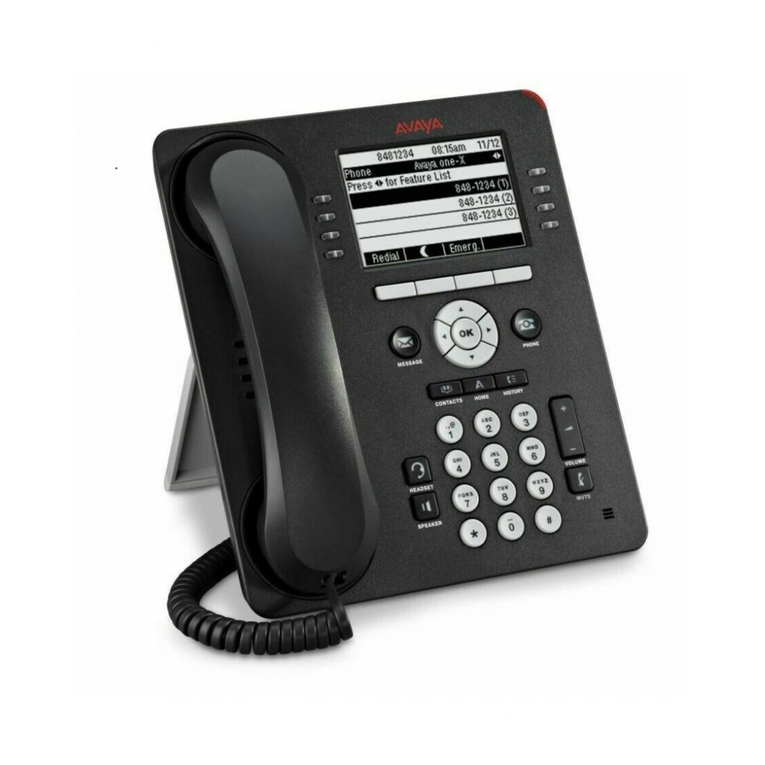
Audio Path . . . . . . . . . . . . . . . . . . . . . . . . . . . . . .23
Headset . . . . . . . . . . . . . . . . . . . . . . . . . . . . . . . .25
Display . . . . . . . . . . . . . . . . . . . . . . . . . . . . . . . . . . . . .26
Voice Services . . . . . . . . . . . . . . . . . . . . . . . . . . . . . . . . .27
Manual Upgrade . . . . . . . . . . . . . . . . . . . . . . . . . . .29
Diagnostics . . . . . . . . . . . . . . . . . . . . . . . . . . . . . . . . . .30
Audio Diagnostics . . . . . . . . . . . . . . . . . . . . . . . . . .31
Ping . . . . . . . . . . . . . . . . . . . . . . . . . . . . . . . . . .33
TCP DUMP . . . . . . . . . . . . . . . . . . . . . . . . . . . . . .33
DHCP Trace . . . . . . . . . . . . . . . . . . . . . . . . . . . . . .35
Wi-Fi . . . . . . . . . . . . . . . . . . . . . . . . . . . . . . . . . . . . . .37
Connecting to a Wi-Fi network . . . . . . . . . . . . . . . . . . .38
Restart . . . . . . . . . . . . . . . . . . . . . . . . . . . . . . . . . . . . .41
Configuring and using programmable keys . . . . . . . . . . . . . . . 42
LED Indicator . . . . . . . . . . . . . . . . . . . . . . . . . . . . . . . . .43
Speed Call . . . . . . . . . . . . . . . . . . . . . . . . . . . . . . . . . . .43
Other Features . . . . . . . . . . . . . . . . . . . . . . . . . . . . . . . .44
Phone Lock . . . . . . . . . . . . . . . . . . . . . . . . . . . . . .44
Call Forward Always . . . . . . . . . . . . . . . . . . . . . . . . .45
Do Not Disturb . . . . . . . . . . . . . . . . . . . . . . . . . . . .47
Account codes . . . . . . . . . . . . . . . . . . . . . . . . . . . .48
Making calls . . . . . . . . . . . . . . . . . . . . . . . . . . . . . . . . 51
Dialing a number . . . . . . . . . . . . . . . . . . . . . . . . . . . . . . .51
Initiating a callback . . . . . . . . . . . . . . . . . . . . . . . . . . . . . .51
Redialing a number . . . . . . . . . . . . . . . . . . . . . . . . . . . . . .52
Receiving calls . . . . . . . . . . . . . . . . . . . . . . . . . . . . . . . 53
Answering an incoming call . . . . . . . . . . . . . . . . . . . . . . . . .53
Manually forwarding an incoming call . . . . . . . . . . . . . . . . . . .54
Handling calls . . . . . . . . . . . . . . . . . . . . . . . . . . . . . . . 55
Placing a call on hold . . . . . . . . . . . . . . . . . . . . . . . . . . . . .55
Muting the microphone . . . . . . . . . . . . . . . . . . . . . . . . . . .55
Transferring a call . . . . . . . . . . . . . . . . . . . . . . . . . . . . . . .56
Creating a multi-party conference call . . . . . . . . . . . . . . . . . . .57
Ending a conference and transferring remaining parties . . . . .59
Ending calls . . . . . . . . . . . . . . . . . . . . . . . . . . . . . . . . . .60
Managing calls . . . . . . . . . . . . . . . . . . . . . . . . . . . . . . . 61
Contacts . . . . . . . . . . . . . . . . . . . . . . . . . . . . . . . . . . . .61
General functions . . . . . . . . . . . . . . . . . . . . . . . . . .61
Performing a search . . . . . . . . . . . . . . . . . . . . . . . . . . . . . . . . . . . 63

